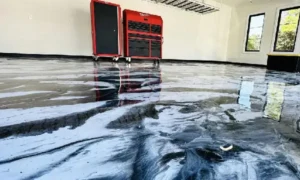In the rapidly evolving landscape of technology, staying current with the latest tools, techniques, and trends is essential for professionals across various industries. Technical training videos have become an invaluable resource for continuous learning, providing accessible, engaging, and effective means to acquire new skills. The “Technical Training Videos V2 E-book” aims to be your comprehensive guide to mastering the art and science of creating high-quality technical training videos. This e-book covers everything from the fundamentals of video production to advanced techniques that will elevate your training content.
Chapter 1: The Importance of Technical Training Videos
Why Technical Training Videos Matter
In an era where information is abundant and time is limited, technical training videos offer a practical solution for disseminating complex information efficiently. These videos can simplify intricate concepts, making them more understandable and accessible to a broader audience. Whether you’re training employees on new software, teaching programming languages, or demonstrating engineering techniques, video content can significantly enhance learning outcomes.
Benefits for Organizations and Learners
For organizations, technical training videos can reduce training costs, standardize the quality of instruction, and provide scalable solutions for onboarding and continuous education. For learners, videos offer the flexibility to learn at their own pace, revisit challenging topics, and engage with content in a multimedia format that can enhance retention and understanding.
Chapter 2: Planning Your Technical Training Videos
Defining Objectives and Audience
Before diving into video production, it’s crucial to define your training objectives and understand your audience. What skills or knowledge should the learners acquire by the end of the training? Who are your learners, and what is their existing level of expertise? Answering these questions will help you tailor your content to meet the specific needs of your audience.
Outlining Your Content
Create a detailed outline of your training program. Break down the content into manageable modules or sections, each with specific learning objectives. This approach not only makes the production process more organized but also helps learners follow along more easily.
Scripting Your Videos
A well-written script is the backbone of a successful technical training video. Your script should be clear, concise, and free of jargon that might confuse beginners. Use plain language and explain technical terms as you go. Additionally, consider incorporating analogies and real-world examples to make complex concepts more relatable.
Chapter 3: Essential Tools and Equipment
Choosing the Right Equipment
Investing in quality equipment can make a significant difference in the production value of your videos. Essential tools include a high-definition camera, a good microphone, and proper lighting. While you don’t need the most expensive gear, ensure that your equipment meets a standard that will deliver clear audio and video quality.
Software for Editing
Editing software is another critical component of video production. Programs like Adobe Premiere Pro, Final Cut Pro, and even more accessible options like Camtasia or iMovie can help you create professional-quality videos. These tools allow you to cut unnecessary footage, add transitions, incorporate graphics, and enhance audio quality.
Screen Recording Tools
For software tutorials and other computer-based demonstrations, screen recording tools are indispensable. Software like Camtasia, OBS Studio, or ScreenFlow can capture your screen activity, allowing you to create step-by-step guides that viewers can follow along with.
Chapter 4: Production Techniques
Setting Up Your Studio
Creating a dedicated space for video production can streamline your workflow and ensure consistent quality. Choose a quiet location with minimal background noise and distractions. Set up your lighting to avoid harsh shadows and ensure that your face and any objects you’re demonstrating are well-lit.
Recording Tips
When recording, speak clearly and at a moderate pace. Use a conversational tone to keep the viewers engaged. If you’re demonstrating software or technical processes, ensure that your actions on screen are visible and easy to follow. Rehearse your script multiple times to build confidence and reduce the need for multiple takes.
Incorporating Visual Aids
Visual aids such as slides, diagrams, and on-screen annotations can enhance the learning experience. Use these tools to highlight key points, illustrate complex concepts, and provide additional context. Ensure that your visuals are clear, legible, and relevant to the content being discussed.
Chapter 5: Post-Production
Editing Your Videos
Post-production is where your raw footage is transformed into a polished training video. Begin by reviewing all your footage and selecting the best takes. Use your editing software to trim excess content, add transitions, and sync your audio and video. Pay attention to pacing—ensure that the video flows smoothly and maintains the viewer’s interest.
Adding Graphics and Animations
Graphics and animations can make your videos more engaging and visually appealing. Use them to introduce new sections, emphasize important information, or provide visual explanations of complex concepts. However, use these elements sparingly to avoid overwhelming your viewers.
Subtitles and Closed Captions
Adding subtitles or closed captions to your videos can make them more accessible to a wider audience, including non-native speakers and individuals with hearing impairments. Most video editing software includes tools for adding and syncing captions. Ensure that your captions are accurate and timed correctly with the spoken content.
Chapter 6: Distributing Your Videos
Choosing a Platform
There are numerous platforms available for hosting and distributing your technical training videos. Popular options include YouTube, Vimeo, and specialized e-learning platforms like Udemy or Coursera. Consider the features, audience reach, and costs associated with each platform to determine the best fit for your content.
Promoting Your Videos
Once your videos are published, promote them to reach your target audience. Utilize social media, email marketing, and professional networks to spread the word. Engage with your audience by responding to comments and questions, and encourage viewers to share your videos with others.
Tracking Engagement and Feedback
Use analytics tools provided by your chosen platform to track viewer engagement. Metrics such as watch time, completion rates, and viewer feedback can provide valuable insights into the effectiveness of your training videos. Use this data to identify areas for improvement and to refine your content for future videos.
Chapter 7: Advanced Techniques and Best Practices
Interactive Elements
Incorporating interactive elements can enhance viewer engagement and make your training videos more effective. Consider adding quizzes, interactive simulations, or clickable annotations that allow viewers to explore topics in more depth.
Staying Up-to-Date
Technology and best practices in video production are constantly evolving. Stay current by regularly updating your skills and knowledge. Follow industry blogs, attend workshops, and participate in online forums to keep up with the latest trends and techniques.
Gathering and Implementing Feedback
Continually seek feedback from your audience to understand what’s working and what can be improved. Use surveys, comments, and direct communication to gather insights. Implementing feedback will not only improve your current videos but also build trust and credibility with your audience.
Chapter 8: Case Studies and Success Stories
Real-World Examples
Examining case studies and success stories can provide inspiration and practical insights. Look at how successful educators and organizations have utilized technical training videos to achieve their goals. Analyze what worked well and consider how you can apply similar strategies to your own content.
Learning from Mistakes
Don’t be afraid to learn from your own mistakes and the experiences of others. Identify common pitfalls in video production and find ways to avoid them. Continuous improvement is key to producing high-quality technical training videos.
Chapter 9: Conclusion
The Future of Technical Training Videos
The demand for technical training videos is likely to continue growing as technology becomes increasingly integral to various industries. By mastering the techniques outlined in this e-book, you can create effective, engaging, and high-quality training videos that meet the evolving needs of learners.
Your Journey Ahead
As you embark on your journey to create technical training videos, remember that the process is iterative. Each video you produce is an opportunity to learn, improve, and make a positive impact on your audience. Stay curious, keep experimenting, and strive for excellence in every project.
The “Technical Training Videos V2 E-book” is designed to be a comprehensive resource for anyone looking to create impactful technical training content. By following the guidelines and best practices outlined in this e-book, you can develop videos that not only educate but also inspire and engage your audience. Whether you’re a seasoned professional or just starting out, this e-book will provide you with the knowledge and tools you need to succeed in the world of technical training videos.






























